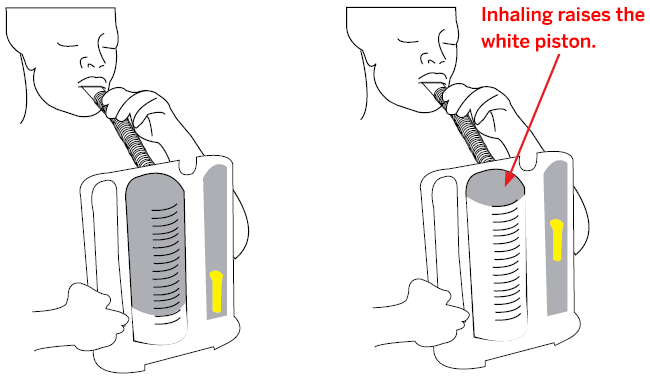Recovering in the Hospital - Surgical Guide To Right Posterior Total Hip Replacement (Modified/Pose Avoidance)
Hospital staff will plan, provide and monitor your care. This may include a physician, physician assistant, nurse, nurse practitioner, physical therapist and/or social worker. Our nursing staff will position you properly in bed and help you turn until you are able to move on your own. You may have a pillow between your legs if ordered by your surgeon. Anesthesia can temporarily inhibit urination. A catheter may temporarily be inserted into the bladder to remove urine, though this is not common.
Exercise
Gentle exercises will improve your range of motion, help your blood circulate, and help strengthen your muscles. These basic exercises are reviewed at your pre-op physical therapy visit. A physical therapist may review your exercise program with you after surgery.
Deep Breathing
Deep breathing exercises prevent mucus from building up in the airways or lungs, which may cause pneumonia. Typically, you take deep breaths automatically. But when you are in pain or on sedating pain medications, your breathing may be more shallow. To ensure you take deep breaths regularly, the nursing staff may provide you with and educate you on using an incentive spirometer. You should do deep breathing exercises every 2 to 3 hours while you're awake.
How to Use the Incentive Spirometer
- Hold the incentive spirometer in an upright position. To start, breathe out (exhale) normally. Then close your lips tightly around the mouthpiece
- Take a slow, deep breath through your mouth (inhale). Breathe in as deeply as you can. When you breathe in, try to keep the yellow cup in the BEST to BETTER flow range. The white piston in the main chamber moves up slowly when you breathe in to measure how deep your breaths are. Try to move the white piston as high up as you can.
- Relax, remove the mouthpiece and then breathe out normally. The white piston will slowly fall to the bottom of the chamber.
- Relax and breathe normally for a moment after each deep breath.
- Rest for a few seconds. Repeat this exercise at least 10 times every hour while you are awake.

Tips for a Successful Recovery at HSS
Physical Therapy
- Participate in physical therapy (PT) daily.
- A physical therapy schedule is available by 8:30 am 7 days a week. Ask your nurse when you are scheduled for therapy so you can be prepared and ready to participate.
- Please note that scheduled PT time is approximate.
Patient Safety and Falls Prevention
- Do not get in or out of bed by yourself! Always ask for assistance.
- HSS has developed a Safety and Falls Prevention pamphlet that you should read. If you don’t already have one, ask your therapist for a copy.
Bathroom Privileges
- Once you are able to tolerate being out of bed for at least 20 minutes, you will be safe to use the bathroom with assistance.
- If possible, use the bathroom prior to physical therapy so you can use your treatment session to improve functional mobility.
- Bedside commodes or bedpans are alternatives to getting out of bed to use the bathroom.
